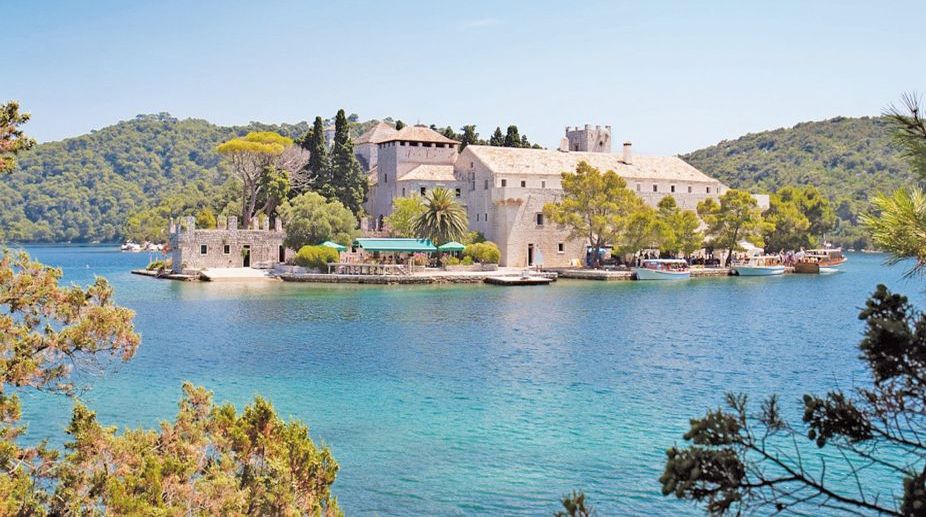4pc hike in DA for state employees
She presented the state budget for 2024-25 in the Assembly this afternoon.

Mljet
When we drove out of the airport in Dubrovnik, Croatia, we were surrounded by hills. The hands of the airport clock had just edged past 12. “In the afternoon you will come upon a land in which it will always seem afternoon”, we had been forewarned. It was a short drive to our hotel past flashes of the tantalising turquoise seascape dancing to the gentle tune of sea-water lapping with low sounds.
After a quick lunch we made our languorous way to the foothills of Mount Srd just behind the city walls. We took the cable car up the low mountain right to the very top. The sun, preparing to call it a day, still deceptively warm, smiled benevolently on Fort Imperijal built during the Napoleonic war.

Below us stretched the vast expanse of the aquamarine splendour of the Adriatic Sea broken by the distinctive terracotta-tiled rooftops inside the walled city with limestone-paved pedestrian streets glistening through the footfalls of visitors. To the west lay the verdant lushness of Lokrum Island, easily accessible by boat from the walled city, — in short, everything that made Dubrovnik the filming location of Kings Landing in Game of Thrones!
Advertisement
A restaurant was the perfect venue for a pit stop at the summit. We sipped bijela kava (white coffee), watching the world dissolve into the gathering Mediterranean evening gloom, the languid air sweetly fragranced by the intoxicating aroma of the blossoms of the wild orange trees, which crowded all around as we sat perched on the cliff side rolling in the sunset-flushed slumberous sheet of foam below.

Next morning, through one of the four gates that lead to it, we were within the city walls, which run an uninterrupted course of almost two kilometres. Parts of the wall were built during the early Middle Ages and continuously extended and strengthened until the 17th century. It is a Unesco heritage site, amongst the largest, most complete and oldest preserved fortification systems in Europe.
We took in the sights as we walked the Stradun (officially Placa), the fully pedestrianised limestone-paved main street, and the de-facto local promenade. Lined on both sides with shops and eateries, the Stradun extends from Pile gate, the western entrance to the old town, to the harbour. The Onofrio’s Fountain is a magnificent sight, a 16-sided container with a cupola, one of the ending-points of the complex aqueduct system built in the 15th century and still the source of water for much of Dubrovnik.

Further down is the city bell tower with Maro and Baro, two Roman soldiers in bronze covered with green patina, still striking the massive, two ton bell every hour. Close by, is Church of Saint Blaise, a Baroque church built on the site of a 14th century Romanesque church damaged in earthquake in the 17th century.
We sat on the wide staircase, resting our tired legs, shaking off that sense of recurring lethargy that still overwhelmed us. Savouring lovely gelato, we sat and watched the world pass by. The Italian influence is very perceptible with Italy being so close, on the other side of the Adriatic, and with historical links with the Venetian republic.

Revived somewhat, we ascended the steps to the top of the city walls. A short climb and we were greeted with wonderful views of the crowded Stradun below. We passed a few circular fortresses to the sea facing walls. It was a clear day and the view was out-of-this-world.
We walked around, mesmerised, lost for words. We were surrounded by a thousand years of history amidst incomparable panoramic views. Humbled, we slipped through a hole in the wall to Buza bar, hanging on the cliffs right above the sea; undoubtedly the bar with the best view in the world. We downed our sundowners watching the sun go down.
After sunset we descended the steps back to Stradun, which was now lit-up and bathed in golden light. We chose a restaurant in one of the many side streets leading away and gorged ourselves on octopus salad, crispy fried squids and cuttlefish ink risotto; never for a minute doubting the waiter’s proud assertion that everything was from that afternoon’s catch.
Next day, we went exploring the many islands that surround Dubrovnik.

The nearest and the smallest is Lokrum, 60 metres from the old town and a very short ferry ride away. Ruins of a Benedictine monastery are surrounded by a botanical garden — a more recent development to the garden adjoining the original mansion of Archduke Maximilian Ferdinand of Habsburg.
The archduke had imported peacocks from the Canary Islands and which can still be seen in large numbers walking proudly in their magnificent plumage. It is rumoured Richard the Lionheart was shipwrecked here in 1192 when returning home from the Crusades.
Further away is the island of Mljet. Legend has it that Ulysses, shipwrecked, had taken shelter in a cave here. Perhaps the source of my lethargic stupour — the land of the lotos-eaters was close at hand — “Most weary seem’d the sea, weary the oar, weary the wandering fields of barren foam”.
At the hotel that evening the manager explained, “you have the fjaka state of mind”. Apparently, fjaka, a Croatian slang, is a mild state of unconsciousness, half somewhere and half nowhere — an inexplicable lethargy, general passivity on the journey to nothingness; to you and me it is the perfect holiday state of mind!
Advertisement